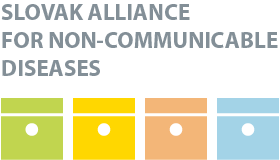—
HPI Network > HPI - Health Policy Institute > Health System in Slovakia > 6. Principal health reforms > 6.4 Future reforms
6.4 Future reforms
Friday, 06. May 2011, 20:14 — HPI
| << PREVIOUS
6.3 Key elements of the health reform, 2002–2006 |
Introduction – Organization – Financing – Resources – Provision – Reforms – Assessment – Conclusions – Appendices |
NEXT >>
7. Assessment of the health system |
The government that came to power after the 2010 elections consists of four political parties, which have a conservative or liberal background (see section 1.3). Most of the leading politicians in this coalition were also part of the 2002–2006 government. Unsurprisingly, the Government Manifesto announced measures that are in line with the 2004 reform, which will reverse almost all the changes made by the 2006–2010 government.
According to the new government, the burden of health care funding should be fairly distributed. The system has to be funded sustainably and without creating future debts. The government wants to strengthen public health and prevention. Other plans are to implement a no-claim bonus for adults who have not utilized health care services in a given year and to abolish the obligation to issue referrals to specialists.
In the area of quality of care and safety of the patient the government wants to support the role of standard diagnostic and treatment protocols as well as evidence based medicine. A new system of hospital accreditation is announced. Furthermore, the government intends to restore the independence of the HCSA and increase its effectiveness, transparency and professionalism in terms of supervision.
In pharmaceutical care, the government plans to increase the availability of drugs for insured individuals, including low-income groups, and implement generic prescribing. One of the key measures should be the implementation of a maximum financial limit (€45 quarterly) for out-of-pocket payments on drugs for selected groups of insured.
The government plans to make the scope of health care services covered by SHI more explicit. In addition, the government wants to re-evaluate and restructure the minimum network requirement for health care providers and support the implementation of innovative, transparent and more objective payment mechanisms in hospitals using a DRG system. The government also plans to resume the process of transforming hospitals into joint stock companies. At the same time, the government wants to prevent the establishment of possible cartel agreements of providers and insurance companies in price negotiations. The granting of licences for the emergency health service will be realized in the form of electronic auction.
In health insurance, the government strives to support the development of voluntary complementary health insurance and to allow health insurance companies to make a profit. The government aims to reduce barriers for new entrants to the health insurance markets. The government is also considering decreasing the percentage of redistribution of insurance contributions (now 95%). Finally, the government plans to refine the risk-adjustment system by adding new risk adjusters (pharmaceutical cost groups and diagnostic cost groups).
News
The amendment of the Decree on emergency medical service
Health insurance companies returned over 400 thousand €
The HCSA received 1,647 complaints last year
A half million people will earn more
Most of public limited companies ended in the black
Debt of hospitals on premiums has grown to nearly € 105 MM
Slovak health care may miss € 250 million next year
Profits of HIC amounted to € 69 mil. last year
Owners of Dôvera paid out money but did not paid taxes
Like us on Facebook!
Our analyses
- 10 Years of Health Care Reform
- New University Hospital in Bratislava
- Understanding informal patient payments in Kosovo’s healthcare system
- Analysis of waiting times 2013
- Health Policy Basic Frameworks 2014-2016
- Analysis of informal payments in the health sector in Slovakia
- Serbia: Brief health system review
developed by enscope, s.r.o.
